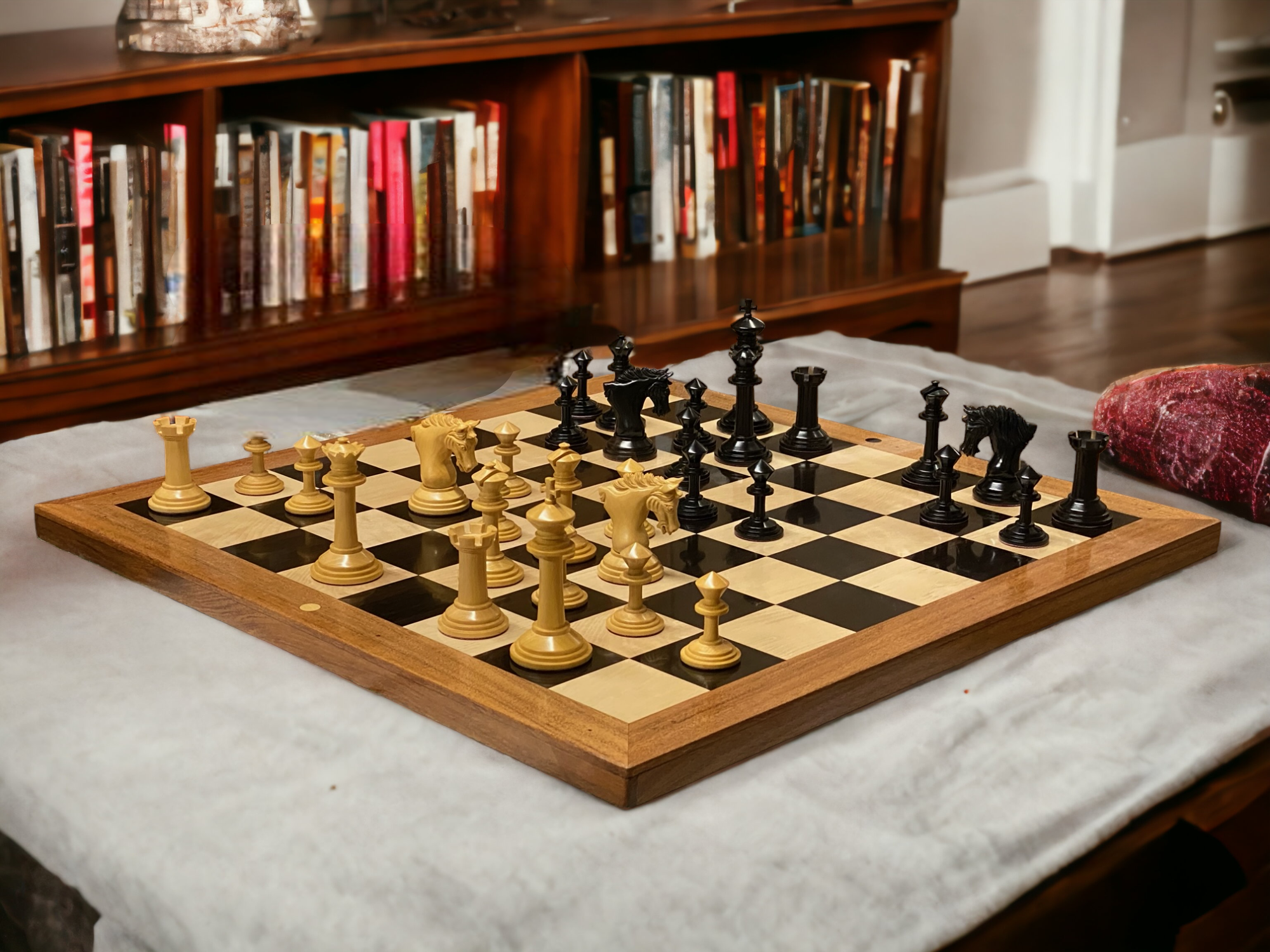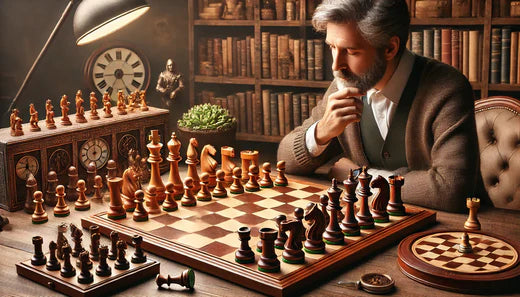As a timeless game of strategy and intellect, chess has not only captivated players with its intricate gameplay but also with the aesthetics of its playing surface—the chess board. Over centuries, the design of chess boards has evolved, reflecting changes in materials, craftsmanship, and cultural influences. This article delves into the fascinating journey of chess board designs, from traditional wooden boards to modern styles featuring innovative materials and aesthetics, exploring how these changes have influenced the game and mirrored broader cultural trends.
Traditional Wooden Boards: A Timeless Classic
The earliest known chess boards date back to the 7th century, featuring simple designs etched on wooden surfaces. These boards were typically handcrafted from wood, with squares of alternating colours—commonly black and white—forming a checkered pattern. While basic in design, these wooden boards laid the foundation for the game's visual identity, setting the stage for centuries of innovation to come.
Influence of Cultural Exchange: Intricate Designs and Ornamentation
As chess spread across different regions and cultures, the design of chess boards began to incorporate unique regional styles and decorative elements. In medieval Europe, for example, chess boards often featured intricate carvings and ornate embellishments, reflecting the craftsmanship of the era and the cultural values of the time. Similarly, in the Islamic world, chess boards were adorned with geometric patterns and motifs inspired by Islamic art and architecture, showcasing the cultural exchange and influence that shaped the game's visual language.
Industrial Revolution and Mass Production: Standardization and Accessibility
The advent of the Industrial Revolution brought about significant changes in chess board production. With advancements in manufacturing techniques and the mass production of goods, chess boards became more standardized and accessible to a wider audience. Wooden boards gave way to materials such as plastic and cardboard, making chess more affordable and portable than ever before. Standardized designs, such as the Staunton pattern, emerged as the norm, further solidifying the visual identity of the game.
Innovation and Modernization: Exploring New Materials and Aesthetics
In recent decades, chess board design has witnessed a resurgence of innovation and experimentation. Designers and artisans have begun to explore new materials and aesthetics, pushing the boundaries of traditional craftsmanship. From sleek metal boards to minimalist acrylic designs, modern chess boards offer a diverse range of styles to suit every taste and preference. Additionally, advancements in technology have led to the development of electronic chess boards, combining the tactile experience of physical boards with the convenience of digital interfaces, further expanding the possibilities of chess board design in the digital age.
Reflecting Cultural Trends: The Intersection of Art and Chess
Beyond functionality, chess board designs often reflect broader cultural trends and artistic movements. Contemporary designers draw inspiration from various sources, ranging from minimalist design principles to avant-garde artistic movements, infusing the game with creativity and innovation. Chess boards have become not only functional playing surfaces but also works of art, showcasing the intersection of creativity, culture, and intellect.
FAQ:
1. How did the Industrial Revolution impact chess board production?
- The Industrial Revolution led to significant changes in chess board production, with advancements in manufacturing techniques enabling mass production of standardized designs. This made chess boards more accessible and affordable to a wider audience, contributing to the popularization of the game.
2. What materials are modern chess boards made from?
- Modern chess boards are crafted from a variety of materials, including wood, plastic, metal, and acrylic. Each material offers unique aesthetic and functional qualities, allowing for diverse styles and designs to suit different preferences.
3. Are themed chess boards popular among players?
- Themed chess boards, inspired by historical events, literature, or popular culture, are popular among players looking to add a unique twist to their gaming experience. These boards often feature intricate designs and thematic elements that reflect specific interests or preferences.



